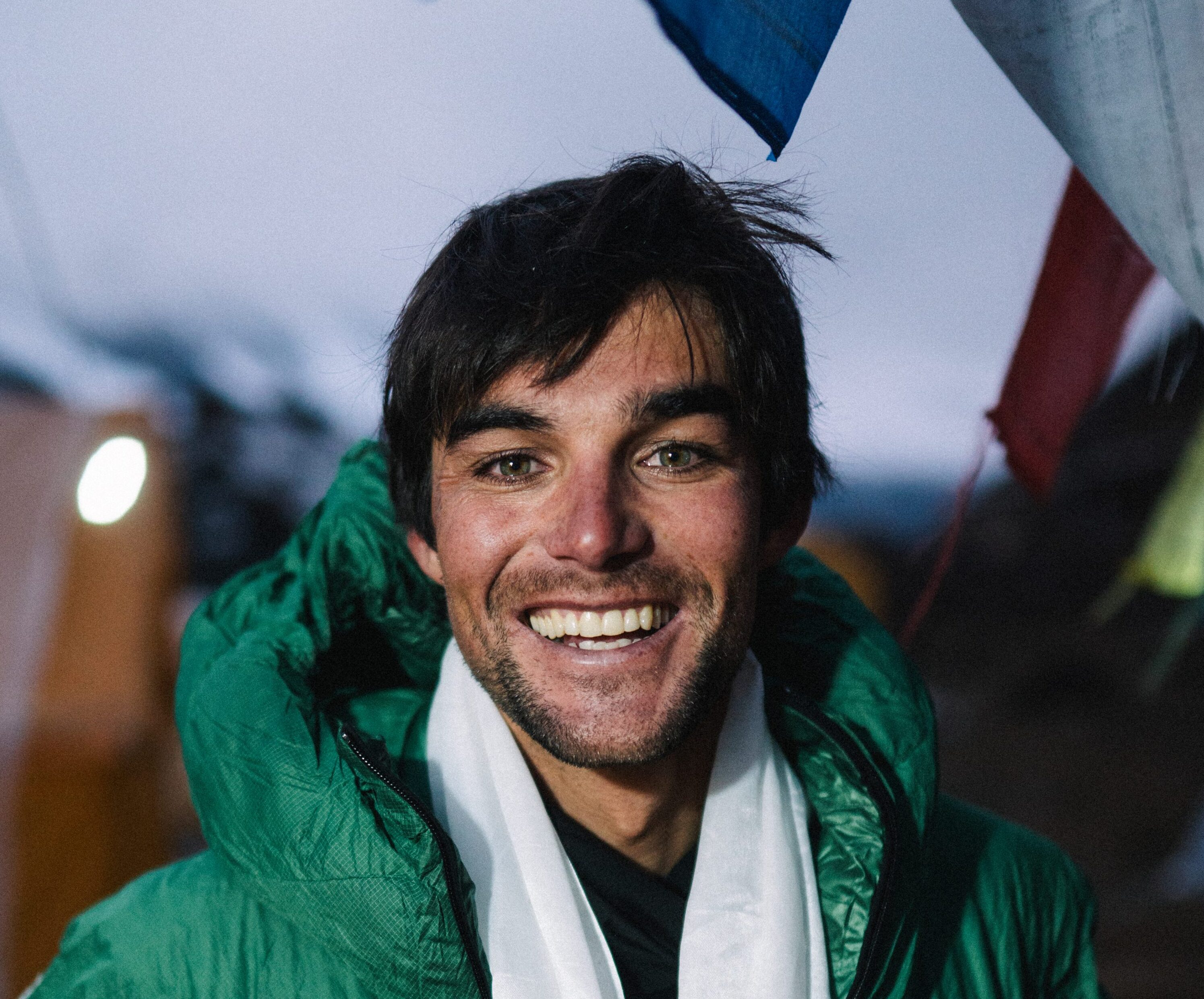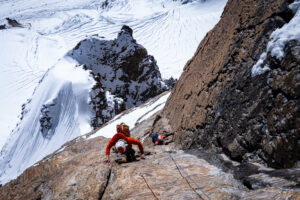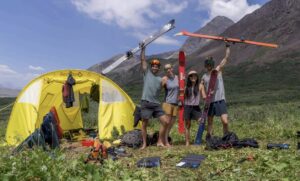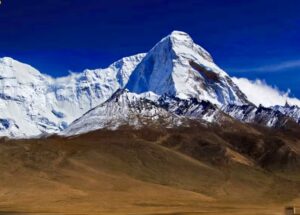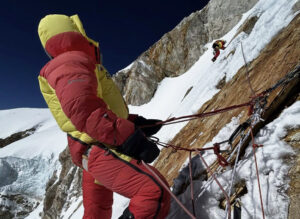Benjamin Vedrines has just returned home to France after his recent climb of the monster North Face of Jannu. He’s still very tired, beyond happy, and slightly overwhelmed at seeing his name in worldwide media. The climb he did with Nicolas Jean was a big deal, and not just for the climbing press. Nevertheless, Vedrines found time to speak with ExplorersWeb about their first ascent of Jannu East, and more.
This was the second time Vedrines and Jean tackled Jannu, after a first attempt last year with Leo Billon. Teams of three are common on these super-sized faces. However, Vedrines and Jean quickly adapted as a team of two, although it meant carrying heavier backpacks and climbing less efficiently, since there are only two climbers to lead all the pitches.
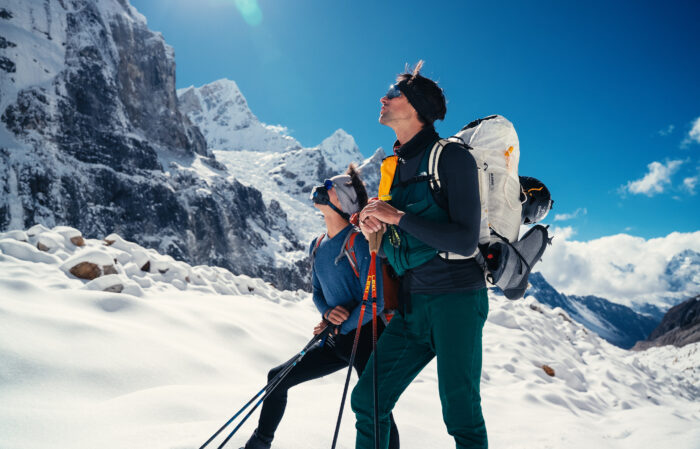
Jean and Vedrines approach the North Face of Jannu. Photo: Quentin Degrenelle
Two against the wall
“Luckily, Nicolas [Jean] and I have climbed extensively as a pair in the Alps, so we are used to working together,” Vedrines said. “Besides, I’ve always liked to climb in a team of two, so this was quite natural.
“Of course, we missed having Leo on the expedition, as he is a really strong asset, and a team of three is stronger. But we trained specifically as a team of two, and used all that we learned from the previous attempt.”
He said that on the wall, he and Jean split the work down the middle. “Each day, he would start and lead half of the day, and I would lead for the second half until we stopped for the night.”
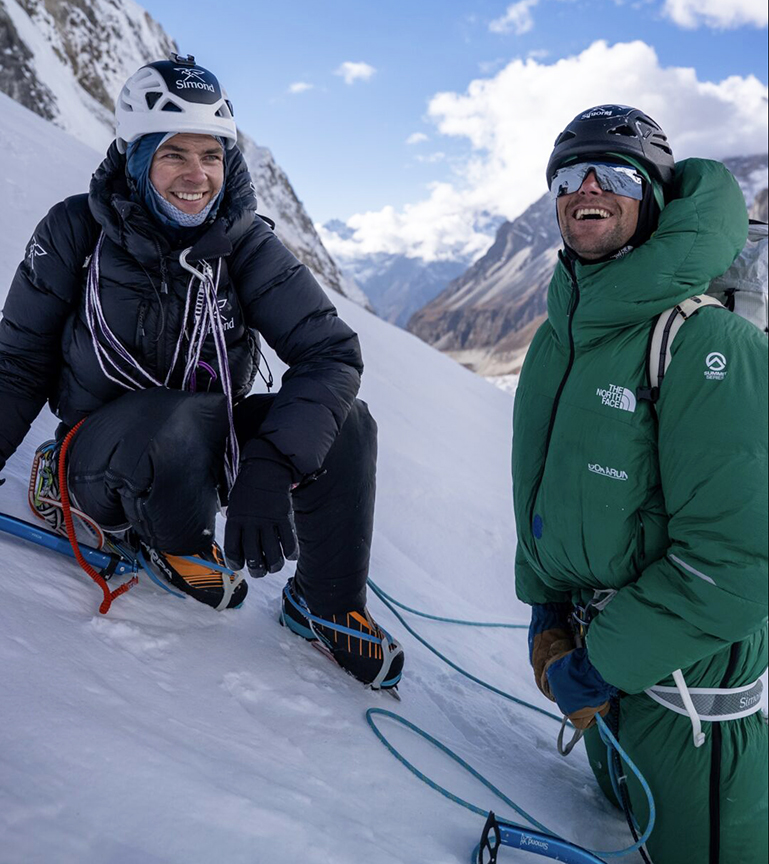
Jean, left, and Vedrines, about to start up the North Face of Jannu. Photo: Quentin Degrenelle
Mental work
Months before the attempt, the pair enhanced their physical endurance and skills, and Vedrines also worked with mental coach Fabien Dupuis. This went beyond risk management and overcoming fear in a highly dangerous place. It was also about developing patience to endure long weeks in base camp and rough conditions, managing frustration and stress, and sticking to the goal.
“You need to be very sure why you want to come back to a face like that,” Vedrines said. “The fact that Mike Gardner died there last year was something hard to accept. Mike’s spirit was still powerful in our minds, and our memories from last year lingered.”
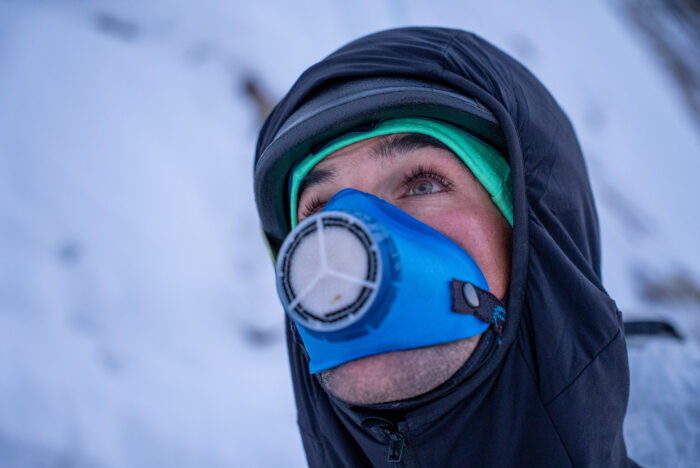
Benjamin Vedrines. Photo: Quentin Degrenelle
Patience
The French team reached Base Camp at the end of August. He, Jean, and their two cameramen, Thibaut Marot and Quentin Degrenne, had to become comfortable with sharing a small base camp for two months, because one of the expedition’s juggling acts was not to hurry but at the same time, stay in shape.
“But for me, I had the experience on K2, where I spent 45 days in Base Camp, before climbing the 8,611m peak, and I did well.”
In fact, Vedrines did more than well. He set the Fastest Known Time (FKT) on K2, a mind-blowing 11-hour climb without bottled oxygen. He then paraglided back to Base Camp.
He and Jean spent two months carefully acclimatizing, and their last rotation was actually a first ascent. The pair summited the previously unclimbed Adinesh Chuli (6,808m). Then they waited for a weather window to attempt Jannu East.
In 2023, Americans Alan Rousseau, Jackson Marvell, and Matt Cornell achieved the first ascent of the North Face of Jannu to the massif’s main point (7,710m). The effort pushed the climbers beyond their physical limits. Rousseau was frostbitten, and the team suffered hallucinations from extreme exhaustion during the last part of the climb.
While extremely tired at the end, Vedrines and Jean never reached that point. According to Vedrines, the key was good acclimatization. At the same time, he admits he felt utterly exhausted on the final part of the climb. “I was surprised at how tired I was, I thought my [fitness] was better!”
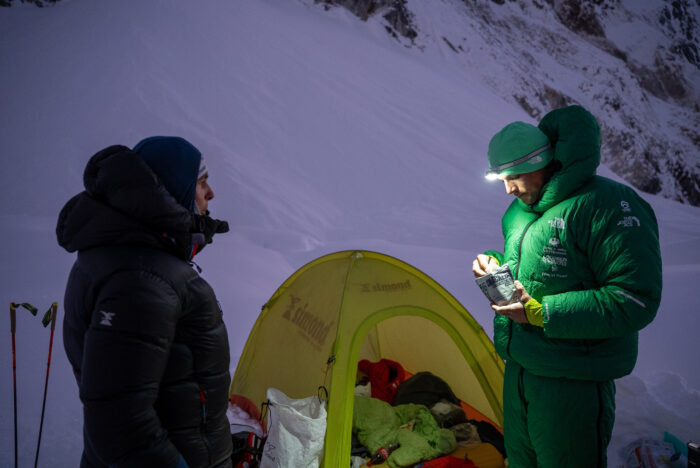
The climbers at Advanced Base Camp. Photo: Quentin Degrenelle
The climb
The climbers had intended to start on October 11 but had to postpone at the last minute because the gale-force winds that were supposed to drop kept hitting the peak with gusts of over 100kph. The following day, the two climbers moved from Base Camp to ABC, trusting in their meteorologist, who remained confident of a weather window.
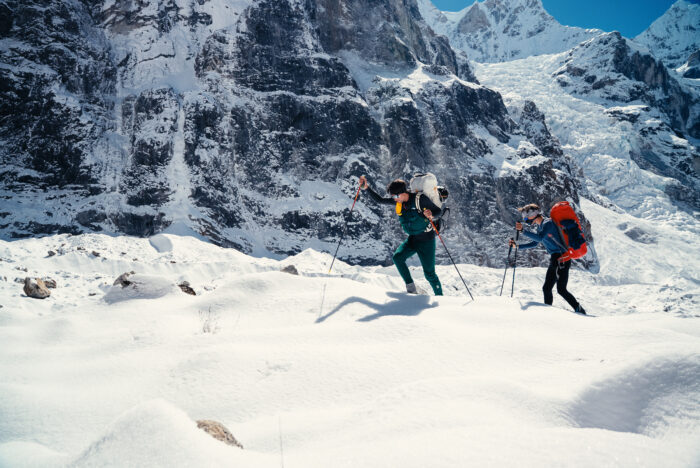
The final approach to Jannu’s North Face. Photo: Quentin Degrenelle
On October 13, they started off from ABC (5,100m) at 5 am, simul-climbing part of the time — “soloing in a team of two,” is how they put it. They set their first bivouac at 6,200m.
Unknown terrain
The following day, they passed the point where Leo Billon had retreated in 2024, and the altitude from which Mike Gardner fell to his death. Beyond that, they were entering unknown terrain.
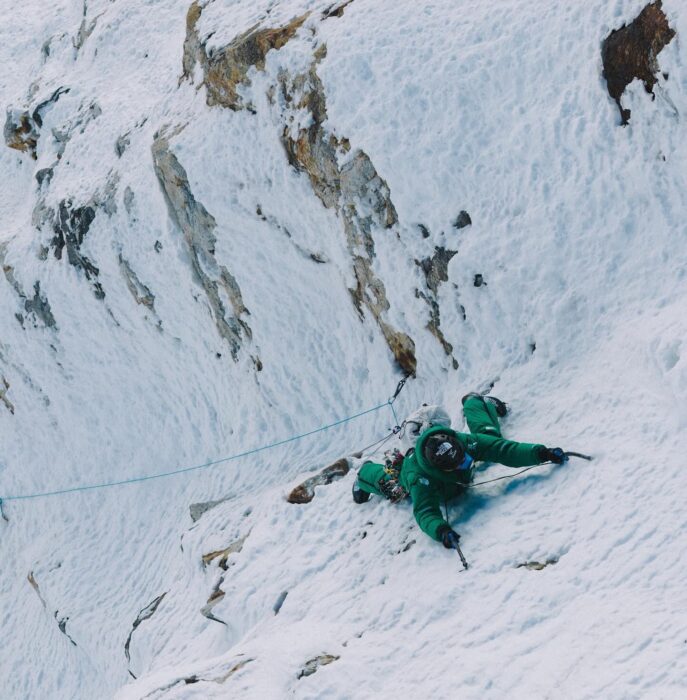
On the vertiginous North Face of Jannu, Vedrines leads an M6 pitch. Drone image by Thibaut Marot
For the sake of transparency, Vedrines notes that they fixed 100m of rope through a particularly difficult section, right before their second bivouac at 6,900m.
At 3:30 am on October 16, the climbers left their bivy in –20°C, toward the razor-thin summit ridge, which they reached at dawn. But difficulties were far from over.
Elusive summit
“The ridge was completely wind-loaded; it was impossible to go straight up, so I had to traverse slightly into the face on the right side, on steep snow, with no solid protection,” Vedrines wrote in a press release. “[At 7,400m,] I found a thin ice band, just enough to climb 10 meters and get back on the ridge. It was [exposed, but it was] the only option.”
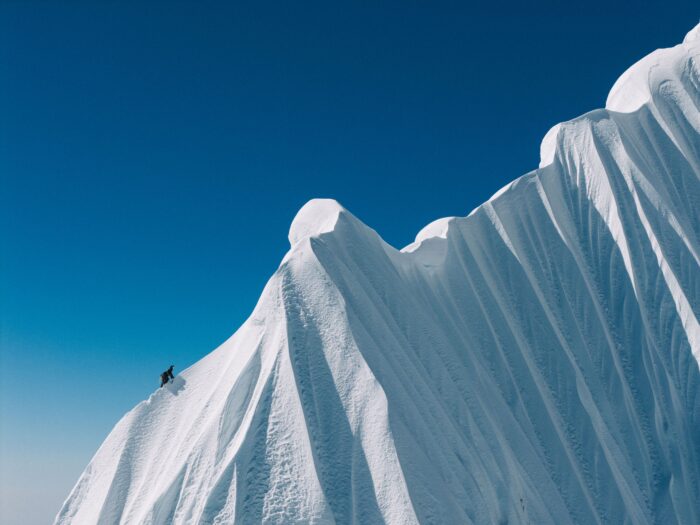
The corniced snow ridge. Photo: Thibaut Marot
At 1 pm, the climbers thought they had reached the summit, but drone pilot Thibaut Marot warned them over the radio that the highest point was actually a second peak at the end of a corniced ridge section. Vedrines and Jean had to overcome exhaustion and continue going for one more hour until they stood on the true summit of Jannu East (7,468m) at 1:40 pm.
Vedrines said about the crux of the climb:
“Most of the time, we were where we wanted to be because we had very good ice conditions. But above the second bivy, we progressed on unknown terrain. After 7,000m, we reached the most exposed part. It was all soft snow, and we didn’t have anywhere to put an anchor or a belay. We had no idea how we would manage to get down.”
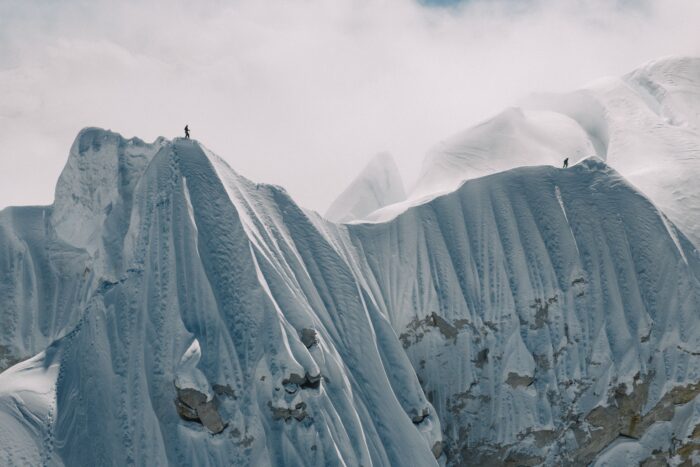
The climbers on the final meters of the ridge, as seen from a drone. Photo: Thibaut Marot
“However, we were so motivated to go to the top that we went on, and left the questions about the return for after the summit. In that sense, the real crux of the climb was the descent.”
Wild descent
The descent started at 6 am on October 16. Vedrines describes it as “wild.” All 50 rappels were delicate, but the upper 400m were the worst.
“We couldn’t place protection, and we had only three snow pickets,” Vedrines said. “It was clearly not enough, so we had to make a difficult decision to go down a different line, on a completely unknown face. It was very stressful, and the conditions were very, very bad.”
They only allowed themselves to relax back in base camp, which they reached at 5:30 pm, “mentally and physically done.”
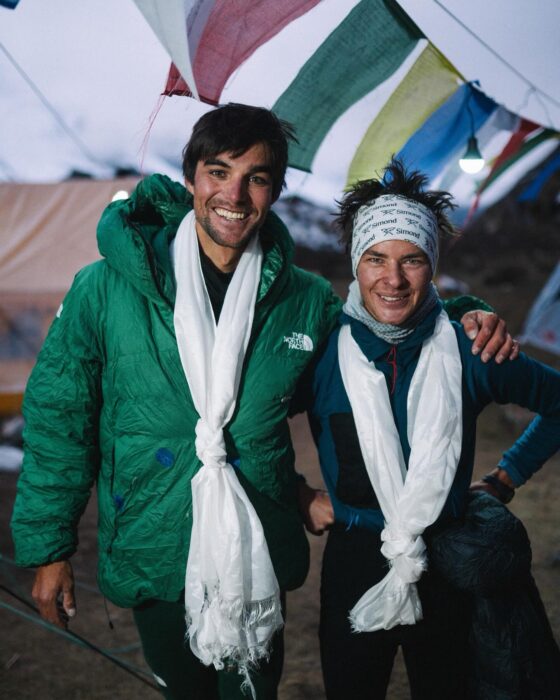
The climbers, safely back in Base Camp. Photo: Quentin Degrenelle
Neither suffered from frostbite, although it was a risk, given the extremely low temperatures.
“The freezing line was very low, at some 4,500m (it was at 6,000m in 2024). I was testing a pair of boots I had never worn before, and Nicolas [Jean] also had rather light boots, so we were concerned we might end up frostbitten,” Vedrines said. “Luckily, when the sun hit us on the ridge, it was like paradise.”
Vedrines still has numb fingertips but is otherwise okay.
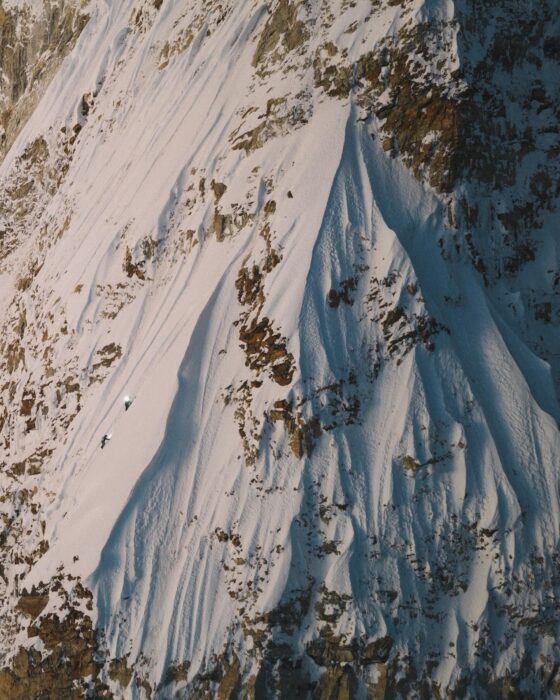
The climbers on the upper part of the face. Photo: Thibaut Marot
Media attention
Some days later, media outlets around the world shared the amazing drone footage of the two climbers on the pristine snow ridge near the summit. This was unusual for an alpine-style climb on a mountain that, despite its difficulty, rarely garners the hoopla of an 8,000m peak.
The attention owed especially to the impressive drone footage. The first climbers on Jannu and similar peaks had no such visual accessory as they risked their lives.
“Yeah, it can be awkward, although I admit I’m very used to drones and they don’t disturb me when I climb,” he said. “Drones have been extremely useful for us, even before the climb, to scout the route.”
As noted above, the drone even guided them to the true summit. Similarly, a drone led Andrzej Bargiel through the Khumbu Icefall as he skied down Everest some weeks ago.
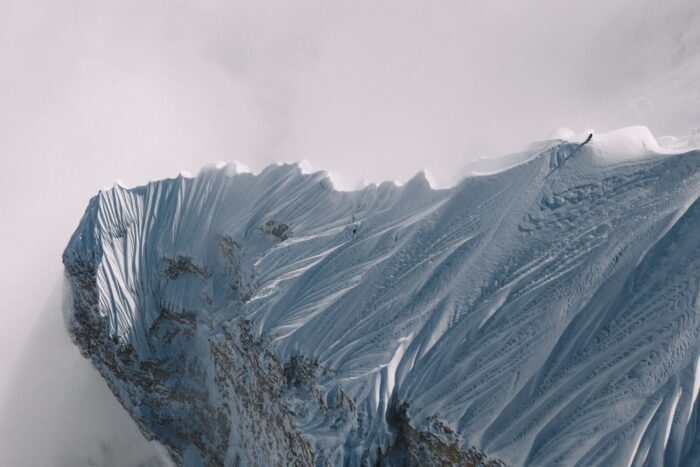
The ridge as seen from a drone. Photo: Thibaut Marot
Drones are in the mountains to stay, said Vedrines, adding that they’re just another tool to gather information, in addition to photos, helicopter recces, satellite maps, and reports from other teams. Most exploratory teams use drones, he pointed out, including Russians Yuri Koshelenko and Aleksey Lonchinski, who attempted the East Face of Jannu East last spring.
Modern alpinism
At ages 33 and 27, Vedrines and Jean are still part of the new generation of climbers because of their approach to what Vedrines describes as modern alpinism.
“It’s not only a question of terrain exploration, because there are virgin peaks everywhere and some of them are actually very easy, so a first ascent is not necessarily a great challenge,” he says. “Our climb of Anidesh Chuli, for instance, was not such a big challenge.”
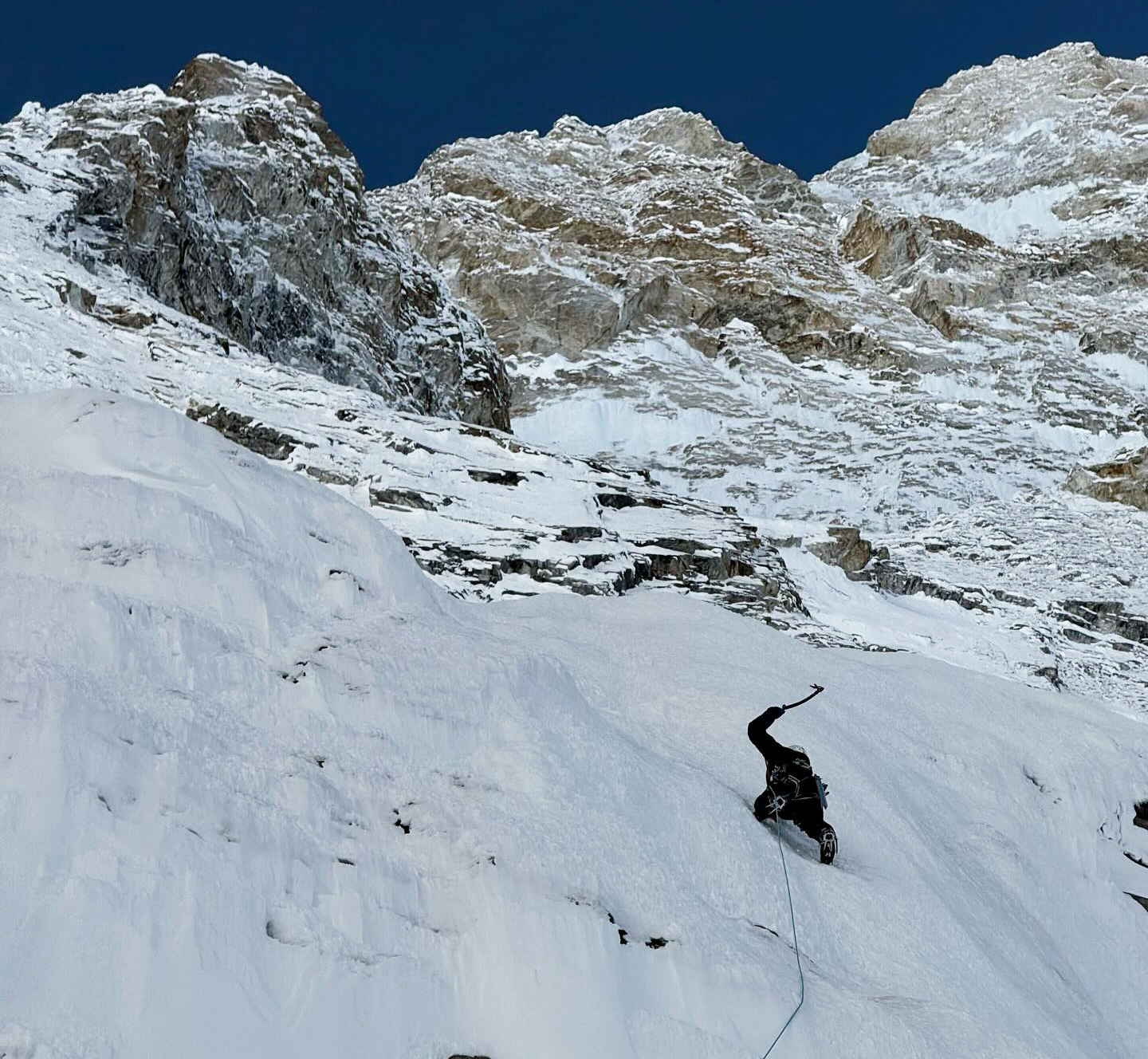
Vertical ice pitches on the North Face of Jannu. Photo: Quentin Degrenelle
Vedrines still considers the Alps a proving ground for contemporary alpinism, like the speed climbs or the link-ups he has done recently. In fact, the feats of Vedrines and Kilian jornet have prompted a new category in the Piolets d’Or — Performance in the Alps for long-range endurance activities done without motorized help.
Jornet’s Alpine Connections project and Vedrines’ link-up — with Leo Billon — of three difficult routes on the three most famous North Faces of the French Alps, the Drus, the Droites and the Grandes Jorasses, are both under consideration for a 2025 Piolet.
Vedrines also mentions the lure of freeing routes that have previously been climbed only in a heavy style, or climbing something in a day that has traditionally take several days.
“This is, for instance, what Leo [Billon] and I did on the Gousseault-Desmaison route on the North Face of the Grandes Jorasses.” They completed the route in a blazing 9 hours 10 minutes.
“It’s way easier to find a remote peak somewhere in the Karakoram or in the Himalaya, buy a plane ticket, pay an agency to take you to the base of the mountain, and climb something which is remote and wild but not super hard,” Vedrines said.
Under such criteria, he says it is quite easy to get included in the list of considered climbs for a Piolet d’Or.
“The high performance-climbs in the Alps, on the contrary, take years and years of preparation and are more impressive,” he says.
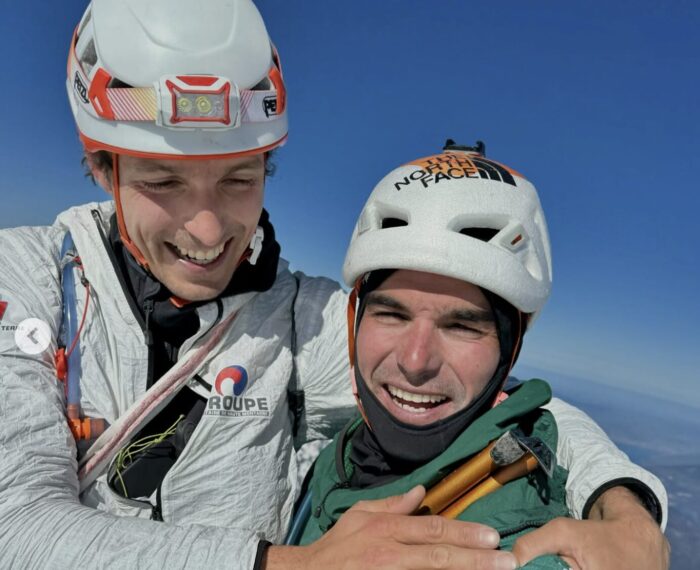
Leo Billon, left, and Benjamin Vedrines on the summit of the Eiger. Photo: Benjamin Vedrines
Even the commercialized 8,000m peaks have plenty of remaining potential, in Vedrines’ eyes. “It may be a question of speed, link-ups, or new skiing lines. [We just need] to keep our minds open.”
